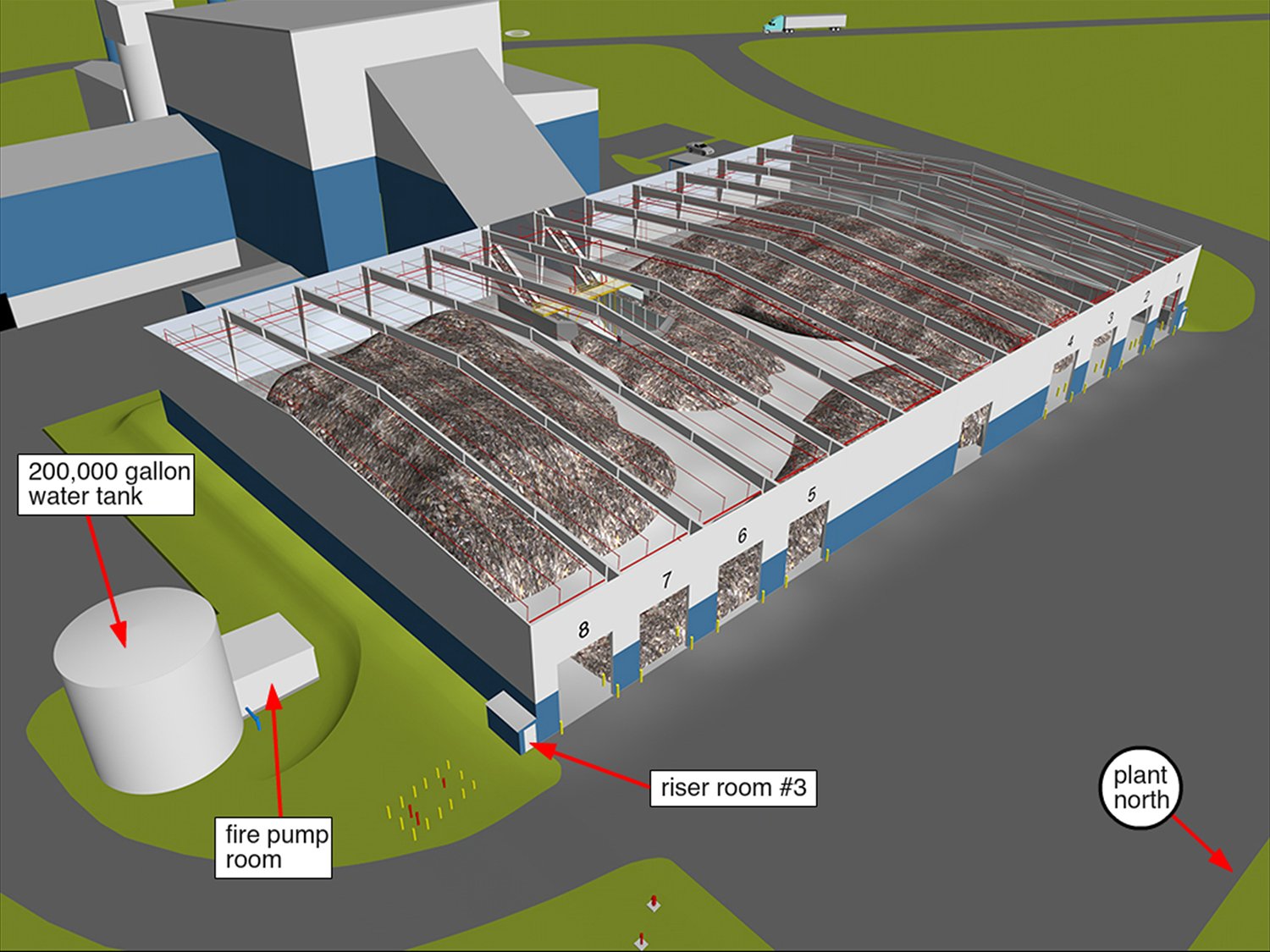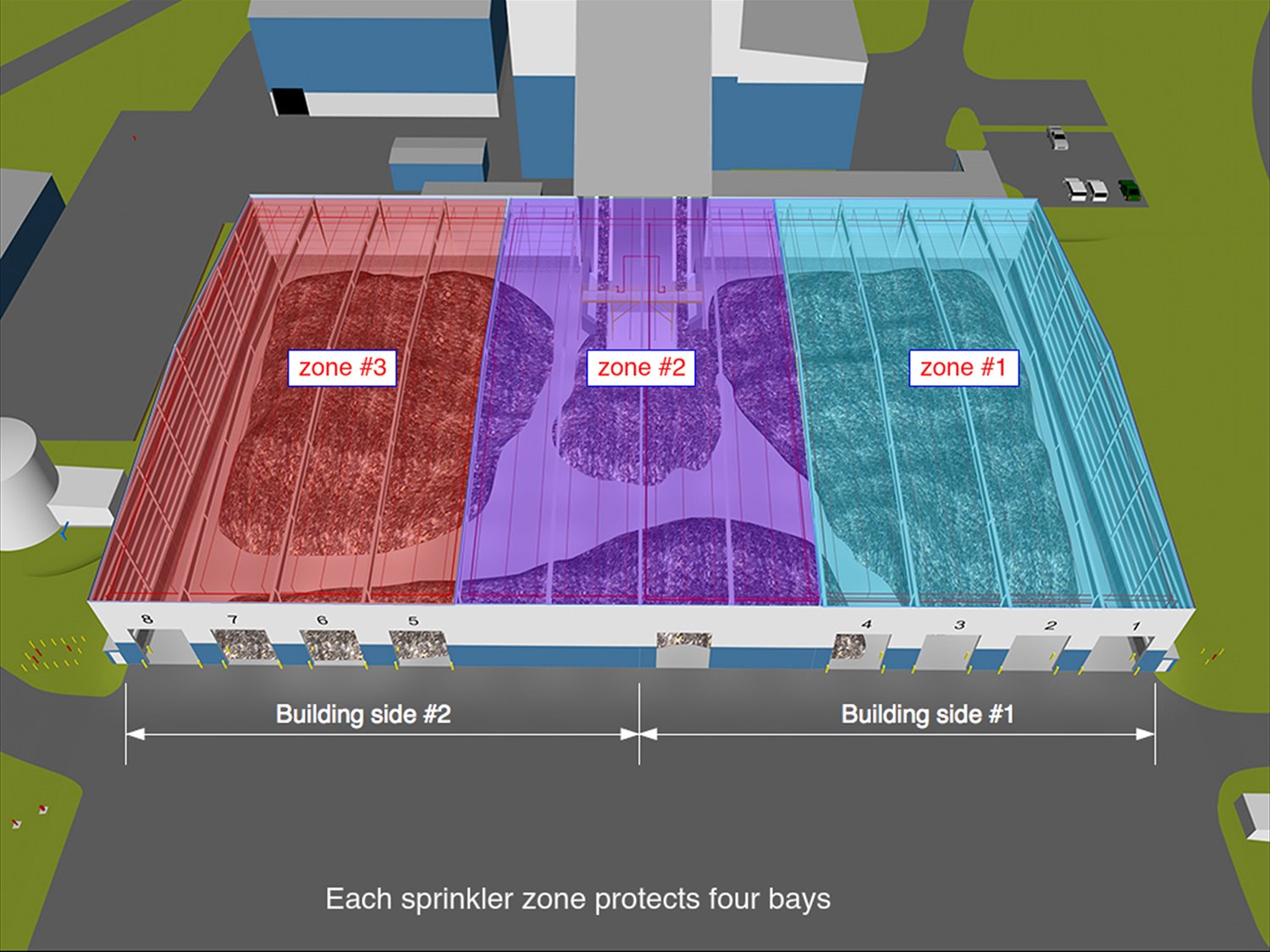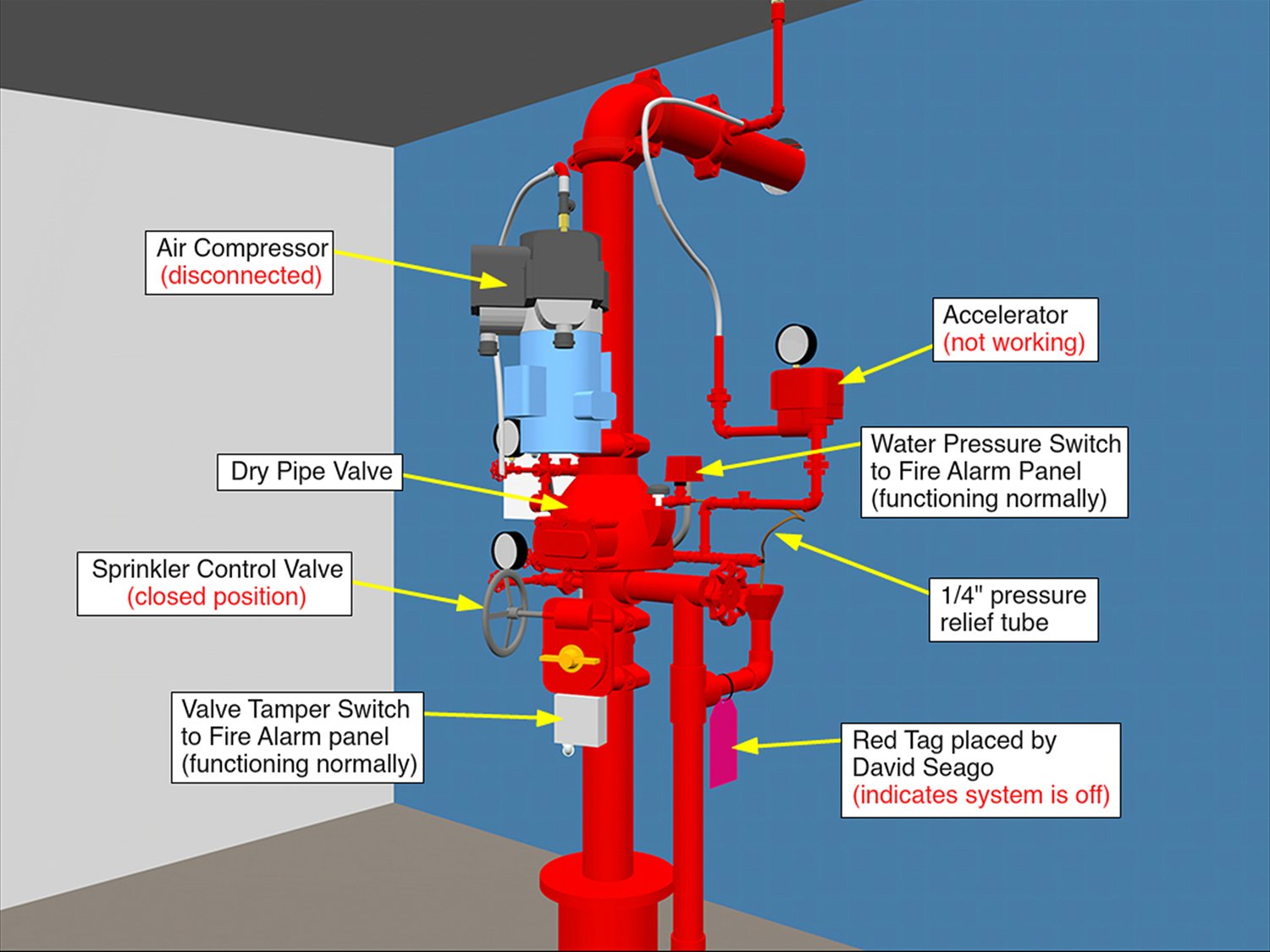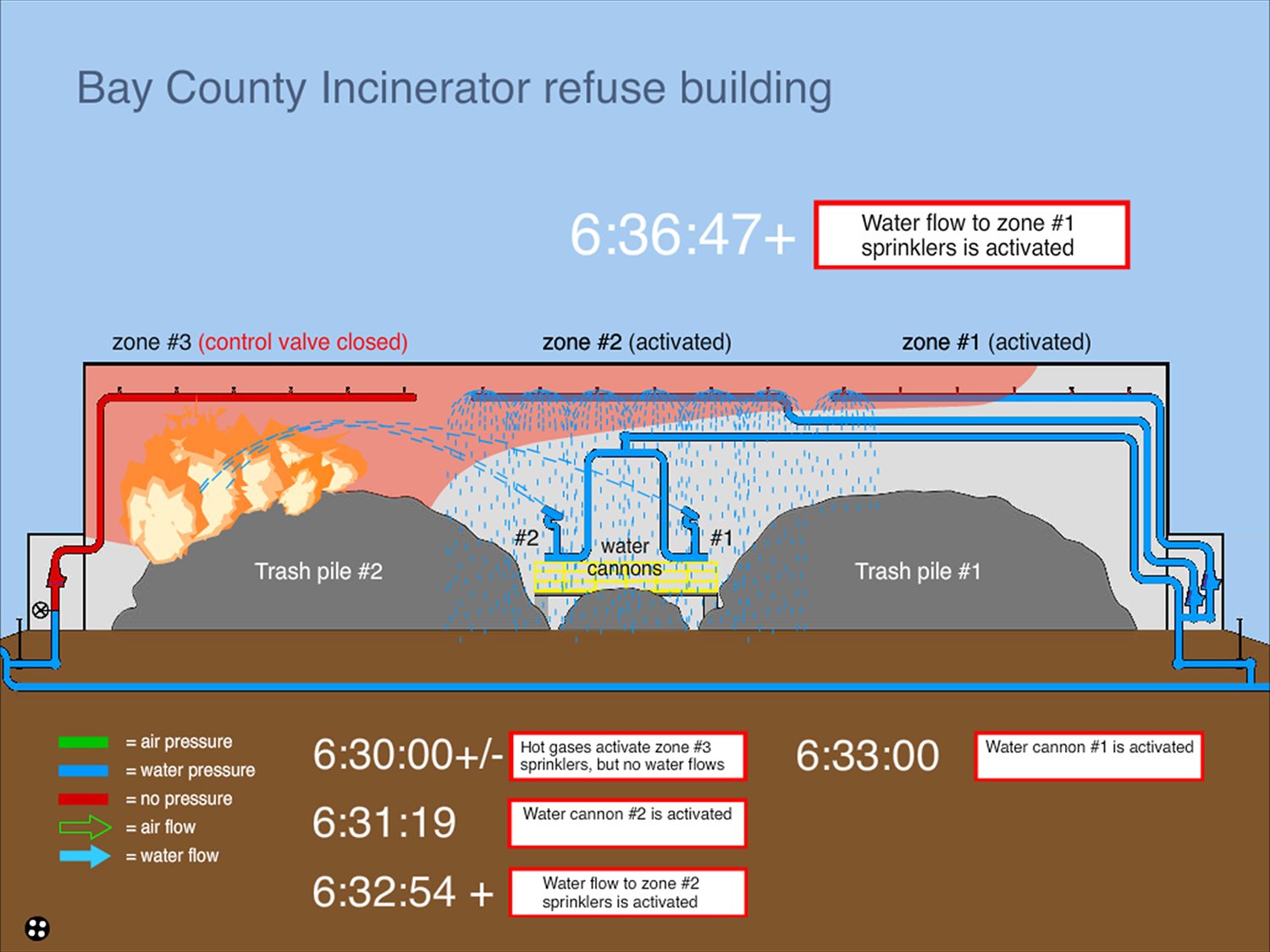A fire started in a large pile of trash on the tipping floor of this Waste-to-Energy facility. It was determined through an extensive site investigation and examination of the detection and alarm system logs that the sprinkler valve controlling the water supply to the sprinklers in the area of the fire was closed and the sprinklers were non-operational. The fire burned out of control and completely destroyed the refuse building.
A comprehensive presentation was developed by Drake Exhibits to accomplish three goals.
Orient jurors to the fire building and educate them about the design and function of the fire protection systems.
Explain the impairments to the fire protection systems that were present at the time of the fire.
Demonstrate how the impairments to the sprinkler system caused the entire building to be lost in the fire.
Orient viewers to the fire building
As a key member of the Rapperport Associates fire investigation team working on behalf of the fire protection company that installed the fire protection systems, Jeff Drake measured and documented the structure and layout of the refuse building, and the associated fire protection and water supply systems. An area of detailed focus was on the sprinkler system components located in riser room #3 where most of the system impairments existed. Another area of concern was the volume of refuse (fuel) located on the tipping floor of the refuse building. Jeff Drake created a 3D computer model of the site, building, trash piles, and fire protection systems for use in illustrating all aspects of the fire.
Explain the impairments to the fire protection systems
A history of mismanagement and a poor understanding of how a dry pipe sprinkler system operates led to a decision to close the main valve on sprinkler zone #3 in this 62,000 square foot building. Serious sprinkler system impairments had been discovered approximately 2 ½ months before the fire and the system had been red tagged by a sprinkler inspection. The impairments were noted on illustrations of the dry pipe system and photos of the actual equipment were coordinated to show specific items in detail.
An interactive animation was created to show how the dry pipe valve functions in normal operation where air pressure is maintained in the sprinkler piping until a sprinkler head opens which causes water to flow through the system. Various impaired conditions were included in the animation so viewers could see why the sprinkler system would not function as designed in these conditions.
Demonstrate how a closed sprinkler valve caused the building to be lost
A cross section animation was created to show, in real time, how the heat from the fire opened multiple sprinkler heads above the fire. With the valve closed, no water flowed to extinguish the fire. Manual water cannons were employed but were ineffective at putting out a fire that grew too large too fast. The heat from the fire spreading along at the roof eventually opened sprinklers in the adjoining zones but the water from these sprinklers was not discharged above the fire. In ten minutes the two active sprinkler zones were discharging so much water where there was no fire the water supply began to diminish. This is when the plant management called the fire department.
Conclusion
In a complicated failure event several types of visual presentation can be employed in combination to orient, educate and demonstrate the various aspects of a failure event in a concise manner.
SEE CASE PORTFOLIO PAGE
-
August 2023
- Aug 2, 2023 Introducing: The Expert Witness, a New Novel Aug 2, 2023
-
June 2023
- Jun 9, 2023 Finite Element Analysis Confirms Thermal Behavior of a Masonry Column Jun 9, 2023
-
April 2023
- Apr 27, 2023 3D Roof Fire Reconstruction Apr 27, 2023
-
March 2023
- Mar 24, 2023 Graphic Diagrams Demonstrate Biomechanics Mar 24, 2023
-
February 2023
- Feb 23, 2023 3D Modeling Combined with Weather Data Analysis Illustrates Expert’s Opinion Feb 23, 2023
-
January 2023
- Jan 25, 2023 Scene Documentation Reveals Evidence of Internal Building Failure Jan 25, 2023
-
August 2022
- Aug 25, 2022 Graphic Reconstruction Proves Theory in a Motor Vehicle Accident - Part Two Aug 25, 2022
-
July 2022
- Jul 20, 2022 Graphic Reconstruction Proves Theory in a Motor Vehicle Accident Jul 20, 2022
-
June 2022
- Jun 15, 2022 Litigation Graphics Strategies Explain a Complicated Loss Jun 15, 2022
-
May 2022
- May 17, 2022 Do I Need a Demonstrative Evidence Expert to Illustrate My Testimony? May 17, 2022
-
April 2022
- Apr 14, 2022 Arc Furnace Failure Illustrated Apr 14, 2022
-
March 2022
- Mar 23, 2022 Fire Litigation Exhibit Options Mar 23, 2022
-
February 2022
- Feb 16, 2022 Gas Explosion Investigation Enhanced by 3D Reconstruction of Building and HVAC System Feb 16, 2022
-
January 2022
- Jan 18, 2022 Scene Reconstruction Illustrates Non-Compliant Furnace Installation that Caused a Fire Jan 18, 2022
- Jan 5, 2022 3D Scene Reconstruction of Cold Storage Facility Serves as a Critical Tool in Fire Investigation Jan 5, 2022





